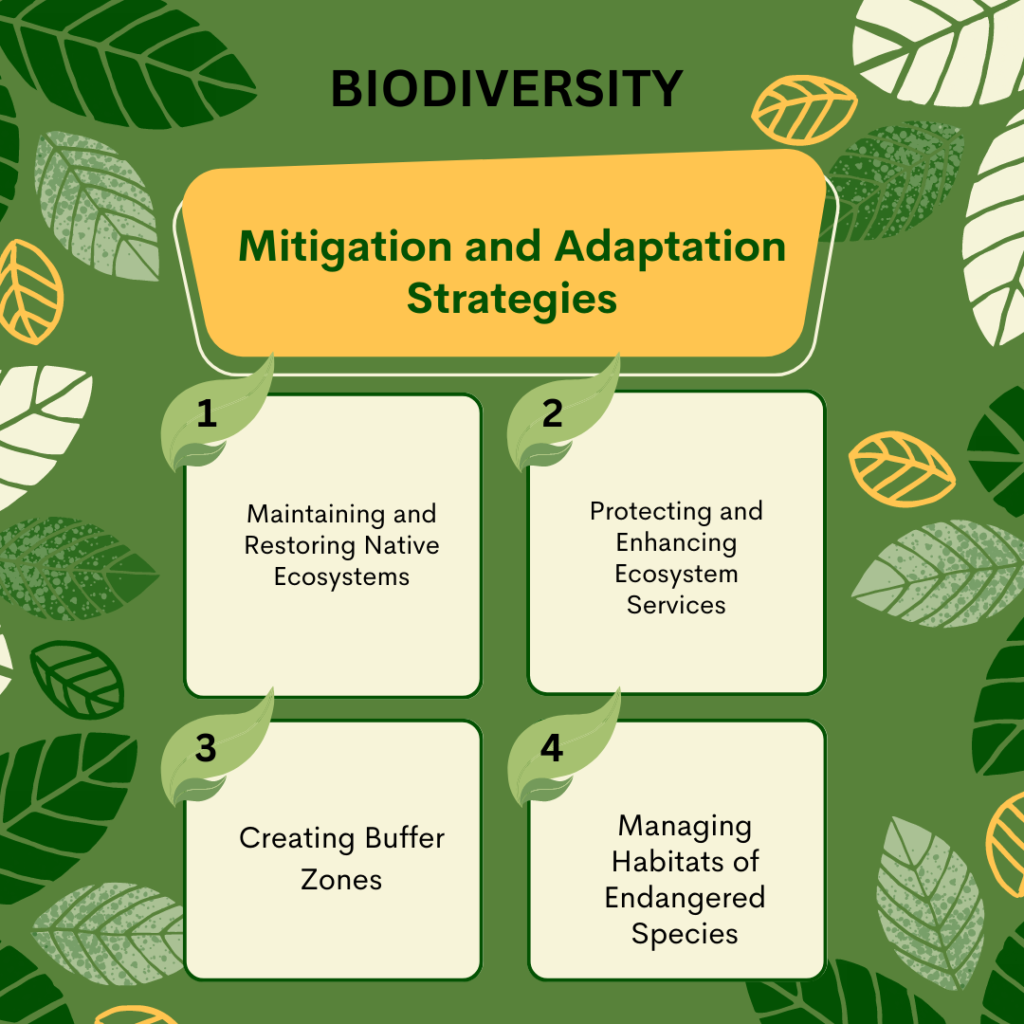Contact: +91 99725 24322 |
Menu
Menu
Quick summary: Learn about the crucial role of biodiversity in mitigating the impacts of climate change and how it can be effectively measured and monitored using sustainability platforms. Explore the importance of preserving and enhancing biodiversity to achieve climate action goals and promote a sustainable future.

“Biodiversity – our strongest natural defense against climate change”
Climate change has been a frontrunner on the global agenda for a while now. What is being increasingly better recognized is the interconnectedness of biodiversity and climate change.
Biodiversity is the variety of life on Earth, including the diversity of genes, species, and ecosystems. However, biodiversity is under threat from a range of human activities, including habitat destruction, pollution, and climate change. In this blog post, I will discuss the importance of biodiversity in climate action and why it is crucial that we protect and conserve biodiversity to mitigate and adapt to the impacts of climate change.
The devastating reality is that when we need biodiversity most to help adapt to and mitigate climate change, it is being degraded faster than any other time in human history. We have lost half of the world’s corals and lose forest areas the size of 27 football fields every minute (WWF LPR 2022). Climate change is having dramatic impacts on temperatures, precipitation cycles and the introduction of pest species in many parts of the world which can, for example, affect soil health and crop genetic diversity which are fundamental issues in addressing food security. I do not have to mention how destructive the threat is to life as we know it.
But there is still hope! Biodiversity had a huge presence during the COP 26 Climate Change Conference deliberations with announcements that showed how effective conservation and restoration play a key part to the climate solution.
The COP 27 Presidency is also leading on related initiatives that highlight the need to address the joint crises of climate change and biodiversity loss together. Of particular note is the Biodiversity Day, that will highlight and showcase the relationship between biodiversity and climate action, both in how climate change threatens biodiversity and especially on the role biodiversity can play in mitigation, adaptation and disaster risk reduction. This is a huge step forward because this shows that governments are making the connection between biodiversity and climate change and they are acting. We hope to see this momentum through policy synergies, cohesive implementation and by mobilizing financial and other resources that will address the needs in all areas. They must ensure that climate and biodiversity action is coordinated, reinforcing the commitments they make under the UNFCCC process and the CBD.
One third of the world’s land area is used for food production and agricultural ecosystems can be found in almost every part of the world. The impacts of climate change on agricultural biodiversity will be extensive and varied.
The main driver of biodiversity loss remains humans’ use of land – primarily for food production. Human activity has already altered over 70 per cent of all ice-free land. When land is converted for agriculture, some animal and plant species may lose their habitat and face extinction.
Rapid population growth has led to a change from traditional to intensive agricultural systems. About 7000 plant species have been cultivated for food since agriculture began. Today, however only about 15 plant species and 8 animal species supply 90 % of our food.
Climate change is playing an increasingly important role in the decline of biodiversity. Climate change has altered marine, terrestrial, and freshwater ecosystems around the world. It has caused the loss of local species, increased diseases, and driven mass mortality of plants and animals, resulting in the first climate-driven extinctions.

Climate change affects the health of ecosystems, influencing shifts in the distribution of plants, viruses, animals, and even human settlements. This can create increased opportunities for animals to spread diseases and for viruses to spill over to humans. Human health can also be affected by reduced ecosystem services, such as the loss of food, medicine and livelihoods provided by nature.
Impact of climate change
Agriculture contributes to climate change. Land-use changes, burning crop residues, using nitrogen fertilizers, raising ruminant animals release greenhouse gases into the atmosphere. Global agriculture is now estimated to account for 20% of total anthropogenic emissions of greenhouse gases.
About half of the greenhouse gas emissions caused by human activity are absorbed by the land and ocean, with the other half remaining in the atmosphere. These ecosystems, together with the biodiversity they support, act as natural carbon sinks and offer what are known as “nature-based” responses to climate change.
Forests cover a third of the earth’s surface and are estimated to contain as much as two thirds of all known terrestrial species. In the last 8000 years, about 45% of earth’s original forest has been converted.
Forests provide around two thirds of the total mitigation potential of all nature-based solutions when they are protected, managed, and restored. Moreover 30% of the area on the earth is still covered in forests, despite significant and continuous losses. Conservation of forests is important since they contain 80% of all carbon stored in terrestrial vegetation.
Deforestation and land-clearing activities emit about 1.7 billion metric tons of carbon per year into the atmosphere.
Conservation of forests offers important opportunities to protect biodiversity and slow climate change. Afforestation and Reforestation can be used to enhance carbon sinks and reservoirs. Seagrass and mangrove environments, for example, can store carbon dioxide from the atmosphere up to four times more effectively than terrestrial forests. Mangroves are an extremely useful resource in the fight against climate change because of their capacity to trap and store carbon.
Limiting carbon emissions and adjusting to a changing climate need the preservation and restoration of natural areas, both on land and in the ocean. By increasing nature’s capacity to absorb emissions, about one-third of the greenhouse gas emission reductions required over the next ten years might be reached.
Businesses, now a days, are becoming more and more conscious about their impact on the environment and also about the impacts that they have on biodiversity. But, today, very few are trying to mitigate those effects by implementing biodiversity strategies.
As the trend for greater transparency and accountability continues, costs are likely to rise for businesses that have not begun to include nature at the core of their enterprise operations. Businesses that ignore this trend will be left behind while those that have embraced this transformation will exploit new opportunities.
Addressing the climate and biodiversity challenges presents the greatest economic opportunity of our time. Multitrillion-dollar markets are in play across all major sectors of the economy, including building technologies, transportation, food and agriculture, and green finance.
Nature-related risks can be incorporated within existing ERM (enterprise risk management) and ESG (environmental, social, and governance) processes, investment decision-making, and financial and non-financial reporting.
To get started on reducing the negative impacts on biodiversity, companies should do the following:
The resilience of ecosystems can be enhanced and the risk of damage to human and natural ecosystems reduced through the adoption of biodiversity-based adaptive and mitigative strategies. Activities that promote mitigation or adaptation to climate change includes:

The potential for quick and effective change remains in our hands and, with the right guidance and information, we can most certainly make a difference for the better.
TraceX’s Sustainability platform can help assess biodiversity metrics by providing tools and data to monitor and analyze biodiversity indicators such as species richness, abundance and distribution. The platform can integrate various sources of information such as field data and satellite imagery to create a comprehensive view of biodiversity within a given area of the ecosystem. Companies stand to benefit from this data as they can understand the impacts and make more informed decisions to promote conservation and reduce negative impacts.
Biodiversity is an essential component of climate action. By conserving and restoring ecosystems, promoting sustainable agriculture, and supporting ecotourism, we can help to preserve biodiversity and reduce the impacts of climate change. The loss of biodiversity is a serious threat to the well-being of humans and the planet as a whole, and it is crucial that we take action to protect and conserve biodiversity for future generations.
